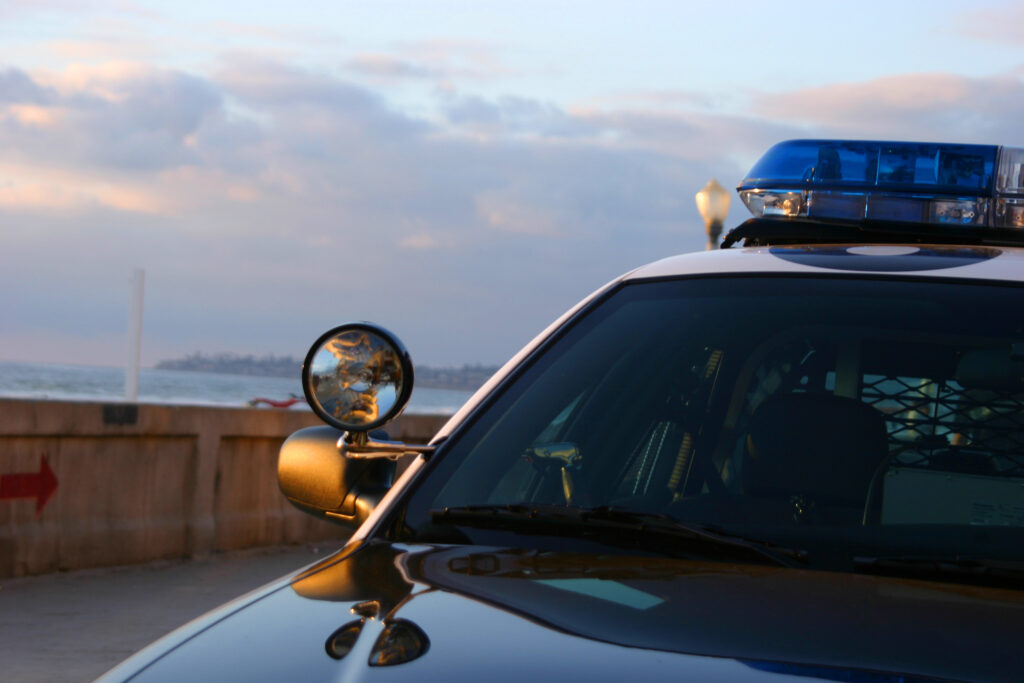This week’s column focuses on a recent incident about which we have received a number of inquiries. On Sept. 18, a Redwood City police officer en route to a reported crime scene lost control of his patrol vehicle and struck a pedestrian standing in the median of El Camino Real, as well as two other cars approaching from the opposite direction. The pedestrian was hospitalized with critical injuries. Readers have reached out wondering who bears responsibility when an officer-involved accident results in serious injury.
In general, the California Vehicle Code (CVC) regulations apply to all drivers, whether or not they are acting in a law enforcement or other public capacity. However, an exception provided in CVC Section 21055 applies when an authorized emergency vehicle is either: (1) responding to an emergency call or fire alarm; (2) engaged in rescue operations; or (3) in immediate pursuit of an actual or suspected violator of the law. In any of these situations, emergency vehicle drivers are required to warn the public with red lights visible from the front of their vehicles and, when reasonably necessary, activation of sirens. This exception is designed to ensure emergency vehicles a clear and speedy pathway when the risks to the public from an emergency outweigh the risks to the public from the emergency vehicle’s haste.
Municipalities may also establish “general orders” governing local practices for handling emergency vehicle responses in line with CVC requirements. For instance, Redwood City Police Department’s General Order 316.4 further requires officers to “reduce speed at all street intersections to such a degree that they shall have complete control of the vehicle” and to “elect to respond to the call without the use of red lights and siren at the legal speed limit” where the officer judges that violating traffic laws would present an unreasonable risk given present road and traffic conditions.
When an officer is sued for personal injuries or property damage resulting from a vehicular accident, CVC Section 21055 may be raised as an affirmative defense, meaning an officer may avoid liability if they can prove every element of the exception. Such a legal determination depends heavily on the facts of a particular case. However, the defense will generally not apply if the officer: (1) neither received information to justify an emergency response nor reasonably determined from observation that such a response was necessary; (2) failed to warn the public by illuminating a red light visible from the front of their vehicle and, if reasonably necessary, activating a siren; (3) failed to drive with due regard for public safety given the extraordinary circumstances; or (4) exercised their emergency privileges “arbitrarily,” which courts have interpreted to mean acting either with knowledge that serious injury will probably result or with wanton or reckless disregard of the possible consequences.
In the case of the Sept. 18 crash, it appears that the officer was dispatched pursuant to a legitimate emergency, namely reports of a home invasion. However, the affirmative defense still may not apply if a court finds any of the other three conditions to exist. For example, it is not clear from available video footage whether the officer’s vehicle was operating the minimum required forward facing red light, or siren if conditions are found to warrant one. It is also unclear why the officer lost control of the vehicle and, given such a result, whether he would be found to have been driving with due regard for public safety. The narrative initially offered by the Redwood City Police Department relies on a finding of wet, slippery road conditions. However, as stated above, the Department’s own General Order requires officers to use sound judgment, including taking road conditions into account, when considering their manner of response to an emergency. The Department has turned investigation of the accident over to the California Highway Patrol.
Employers are generally liable for the negligence of employees acting within the “scope and course” of their employment. Therefore, if the officer is found to have acted negligently, the city of Redwood City can be held responsible for any injuries caused and forced to pay for legal damages. However, if a court finds the officer to have acted with knowledge or wanton and reckless disregard that serious injury will probably result, this level of culpability may be found to be outside the “scope and course” of his employment, relieving the city of employer liability.
The city may also be found liable for the legal damages involved in this accident if it is found to have resulted from a vehicle defect and a court finds the Department failed to properly maintain, inspect, or repair the patrol car. If the car is found to have been defective upon purchase, the manufacturer and dealer may also bear responsibility under a products liability theory.









